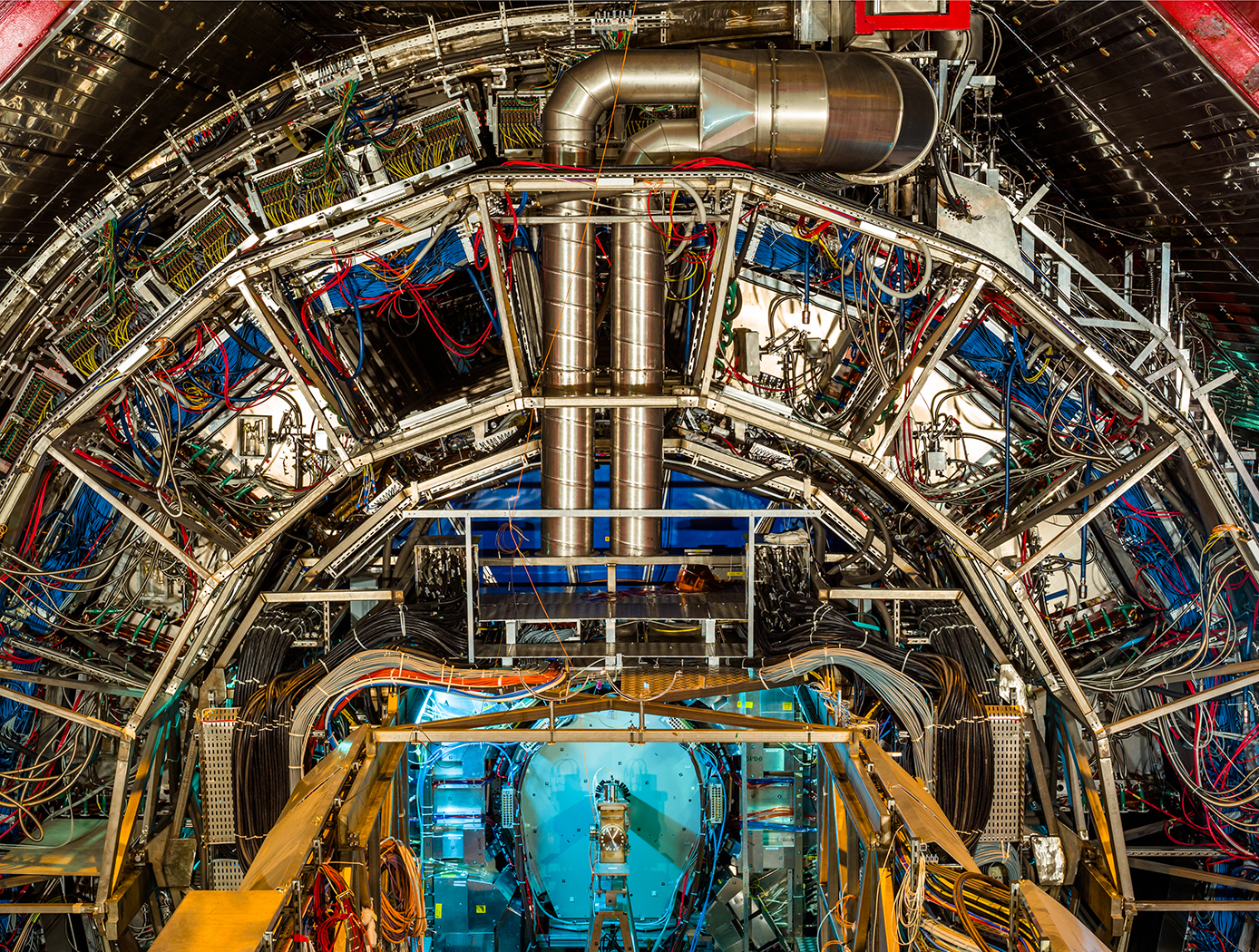Low-Power Charged Particle Detector
Environment
Low-Power Charged Particle Detector (LEW-TOPS-71)
Compact, solid-state charged particle counter for detecting and monitoring radiation
Overview
Innovators at NASA's Glenn Research Center have developed a miniature, solid-state radiation detector that can be used in situations where compact size, low weight, and low power consumption are required. Conventional scintillator-based charged particle counters rely upon a glass photomultiplier tube (PMT) to translate light energy from the radiation source into an electrical signal. Because PMTs are bulky, fragile, and require high voltages to operate, they are not well-suited for harsh environments.
Glenn's technology is solid state, thus eliminating PMTs, which means the device can operate in cramped, harsh, and low-power environments. In addition, because the detector uses a low-voltage, UV-sensitive photodiode, a wave shifter is not required, improving efficiency and further minimizing weight and bulk. Originally developed for space exploration, this compact, robust particle counter can also be used in medical dosimetry, mining, oil and gas exploration, nuclear facility monitoring, and more.
The Technology
Conventional scintillation radiation detectors make use of materials that emit light when hit by ionizing radiation. These large, bulky scintillators range anywhere from 6 inches to 6 feet in size. They are attached to glass photomultiplier tubes (PMTs), which are fragile, require high voltages, and are extremely sensitive to temperature changes. Conventional detectors also include a wave shifter (a material with a dopant to re-emit the scintillator light to match the sensitivity of the PMT or photodiode) which reduces efficiency and introduces unwanted weight and bulk.
Glenn's particle counter overcomes these challenges. A prototype was constructed from off-the-shelf components, and features a small scintillator (less than six inches long) and a low-voltage, UV-sensitive, wide-bandgap photodiode as the detector. Careful matching of the properties of the light emitted from the scintillator, and tailoring the sensitivity of the photodiode eliminates the need for a PMT and a wave shifter, not only saving space, weight, and power but also eliminating potential failure modes. By using wide-bandgap detectors, it can operate in changing temperature, vibration, pressure, and gravity conditions without need for a temperature compensation system. Built from solid-state components, Glenn's device is compact and robust.


Benefits
- Compact: Detector is less than 6 inches long and eliminates the need for PMTs and wave shifters
- Low-power: Low-voltage photodiode components replace high-voltage PMTs
- Portable: Lightweight design enables use in a variety of applications
- Robust: Solid-state components make this technology suitable for operation in extreme vibration environments, as well as high- and low-pressure environments
Applications
- Biomedical (dosimetry, including nuclear medicine, x-rays, and positron emission tomography (PET) scans )
- Environmental monitoring (mining, oil and gas, radiation, weather, nuclear)
- Satellites
Technology Details
Environment
LEW-TOPS-71
LEW-19171-1
See also LEW-TOPS-142 "Compact Full-Field Ion Detector System (CFIDS)"
|
Related Links:
|
Similar Results

Polymer Electrolyte-Based Ambient Temperature Oxygen Microsensor
Conventional ambient-temperature oxygen sensors are limited in various ways: optically based sensors can be expensive and challenging to manufacture; electrochemical cells with liquid electrolytes can have limited lifetimes and become leak sources; and both types of sensors are difficult to miniaturize. These problems are addressed with Glenn's novel ambient temperature oxygen microsensor, which is based on a Nafiontm polymer electrolyte, microfabricated using thin-film technologies. In the past, one drawback of Nafiontm film has been that it can lose conductivity when the moisture content in the film is too low, potentially affecting sensor operation. Glenn researchers devised a method to use certain salts to hold water molecules in the Nafiontm film structure at room temperature. The presence of these salts provides extra sites in the film to promote proton (H+) mobility, thus improving film conductivity and overall sensor performance, particularly in arid and high-temperature environments.
The innovative use of metal/metal oxide as the reference electrode enables miniaturization by eliminating the reference gas and sealing the reference electrode. The combination of interdigitized electrodes with the unique metal/metal oxide reference electrode permits sensor operation in either potentiometric or amperometric mode, as appropriate. In potentiometric mode, which measures voltage differences between working and reference electrodes in different gases, the voltage differences can be monitored with a voltmeter; however, the sensor itself does not need a power source. In room-temperature testing, the sensor achieved repeatable responses to 21 percent oxygen in nitrogen (using nitrogen as a baseline gas), and also detected oxygen from 7 to 21 percent, making Glenn's breakthrough technology usable for personal health monitoring as well as fire detection, fuel-leak detection, and environmental monitoring.

Solar Cell Health Monitoring
One unique characteristic of this innovation is that it effects the measurement of I-V curves without the use of large resistor arrays or active current sources normally used to characterize cells. A single transistor is used as a variable resistive load across the cell. This multi-measurement instrument was constructed using operational amplifiers, analog switches, voltage regulators, metaloxidesemiconductor field-effect transistors (MOSFETs), resistors, and capacitors. The operational amplifiers, analog switches, and voltage regulators are silicon-on-insulator (SOI) technology known for its hardness to the effects of ionizing radiation. The SOI components used can tolerate temperatures up to 225°C, which gives plenty of thermal headroom allowing this circuit to perhaps reside in the solar cell panel itself where temperatures can reach over 100°C.

Phononic Isolated Kinetic Inductance Detector Fabrication Process
The Phononic Isolated KID Fabrication Process utilizes a silicon on insulator, or a silicon wafer coated with a thin film bilayer of silicon oxide and silicon nitride (or amorphous silicon), to be used as the starting wafer. The silicon or silicon nitride thin films act as the structural material. The films thicknesses are chosen based on the desirable phononic crystal properties. The phononic crystal is patterned with electron beam lithography to get minimum features. The structures are etched in a fluorine plasma chemistry stopping on the oxide layer. The niobium or other superconductor layer is deposited, patterned, and etched. This can be done in a liftoff process so as not to damage the SiN or Si underlayer. A hafnium or other superconductor is deposited, patterned, and etched to function as the kinetic inductance material. A silicon handle wafer is patterned and etched using deep reactive ion etching which stops on the silicon oxide. The silicon oxide is etched in hydroflouric acid and a wax bonding material used as a temporary bonding material is dissolved. The final structure is removed from the temporary handle wafer. This process is beneficial in that it is simple aside from the incorporation of the nanostructured membranes.
The Phononic Isolated KID Fabrication Process is an implementation of incorporation of a phononic crystal into a KID architecture. The process can also incorporate a second dieletric material such as nanocrystalline diamond that can be used as a stiffening material for the phononic crystal.

Multi-Stage Filtration System
While HEPA filter elements can last for years without intervention, pre-filtering systems that remove larger particles before they reach the HEPA filter need to be treated (most often by cleaning or replacement) as often as once a week. These treatments can be resource-intensive and expensive, especially in extreme environments. Glenn's innovative system combines a pre-filtration impactor and a scroll filter that reduces the need to replace the more sensitive or expensive filters, extending the system's working life. The system uses an endless belt system to provide the impaction surface. A thin layer of low-toxicity grease is applied to the impaction surface to increase particle adhesion. A high flow turning angle near the impaction surface causes relatively large particles to impact and stick to the surface while smaller particles stay within the air flow. When the surface is covered with particles - or if a layer of particles has grown to a thickness that impairs adhesion - the surface is regenerated. The band is rotated so that the loaded surface passes by a scrapper, removing the layer of particles and a clean segment of the band revolves to become the new impaction surface.
A further innovation is the scroll filter which allows the filtration media to be rotated out of the airflow when fully loaded, providing multiple changes of the filter through a motorized scrolling or indexing mechanism. When nearly fully loaded with dust particles, the exposed media is mechanically rolled up on one side of the filter to both contain and compactly store the dust. The spools that hold the clean and spent filter media are mounted on roller bearings to facilitate the scrolling operation and reduce motor power requirements. Nearly any grade of filter media can be used to meet the desired filtration specification. Additional media rolls can be added after the original roll is spent to further increase filter life.

Inexpensive Microsensor Fabrication Process
Because chemical sensors are used in many aspects of space missions, NASA researchers are continually developing ever smaller and more robust sensors that can be manufactured inexpensively and in high quantities; e.g., in batches. Glenn has developed a way to inexpensively fabricate microsensors using a sacrificial template approach. A nanostructure, such as a carbon nanotube, serves as a template, which can then be coated with a high-temperature oxide material. The carbon nanotube can be burned off, or sacrificed, leaving only the metal oxide. The resulting structure provides the unique morphology and properties of the carbon nanotube, which are advantageous for sensing, along with the material durability and high-temperature sensing capabilities of the metal oxide. This technique increases the surface area available for sensing because both the interior and exterior of the resulting microsensor can be used for gas detection, significantly increasing performance.
The fabrication of these microsensors includes three major steps: (1) synthesis of the porous metal or metal oxide nanostructures using a sacrificial template, (2) deposition of the electrodes onto alumina substrates, and (3) alignment of the nanostructures between the electrodes. The invention has been demonstrated for methane detection at room temperature (using tin oxide, with carbon nanotubes as the sacrificial template). The microsensor offers low power consumption (no heating required), compact size, extremely low cost, and simple batch-fabrication.



